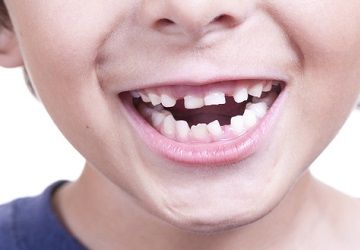Should Parents Store Children's Baby Teeth for Stem Cells?
A recent parenting news article recommends the expensive practice, but is it worth it?

A recent article in Parent Herald touts a 2003 study as a reason for parents to save their children’s deciduous teeth, however, the jury is still out on whether stem cells extracted from these teeth can eventually be used to develop human tissue.
The study cited by Parent Herald was released in April 2003 and determined that children’s baby teeth “contain a rich supply of stem cells in their dental pulp.” These particular stem cells, according to the study, had special advantages when compared to “adult stem cells.” Specifically, they tend to have longer life spans, grow quickly and in laboratory settings, could potentially be used to prompt formation of bone, dentin or neuronal cells.
The thinking behind storing the teeth, Parent Herald writes, is that should a child need new tissue later in life, the stem cells from their teeth could be used to create it.
This urging by experts for parents to store their children’s teeth likely gave rise to a profitable business. A quick google search reveals several companies offering the service. One company, Store-A-Tooth, offers its services for $1,749. Store-A-Tooth requires a dentist to send a child’s teeth to their laboratory for processing. The stem cells are later frozen and stored for later use.
Tooth Bank is another company that offers the same service, requiring dentists to extract the deciduous teeth, then ship them for processing and storage. Their fee structure is slightly different, with an initial processing fee, followed by separate fees for annual storage.
However, the drive to store stem cells extracted from deciduous teeth might be a bit premature. While the potential is there to regenerate tissues, right now, it is exclusively potential. An Issue Summary published by the California Dental Association concludes:
“Research on stem-cell therapies utilizing cells of dental origin may some day progress to offer clear options for tissue repair and regeneration. At this time however, experts agree on the prematurity of claims regarding the future use of dental pulp stem cells for this purpose. It is important that dentists and the public have access to accurate and unbiased information. CDA, as the trusted source of information for oral health in California, can play a key role by providing current information on the CDA web site and in CDA publications.”